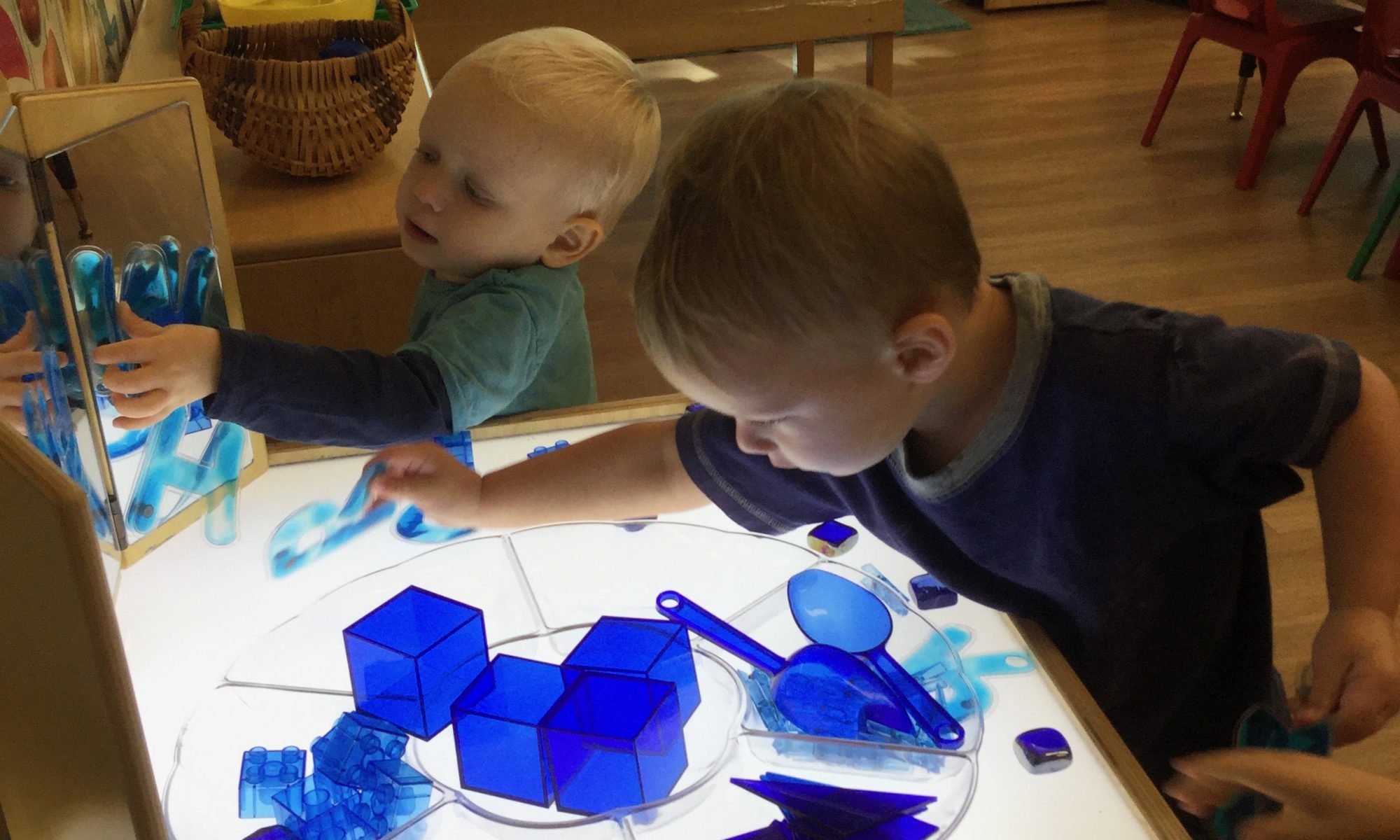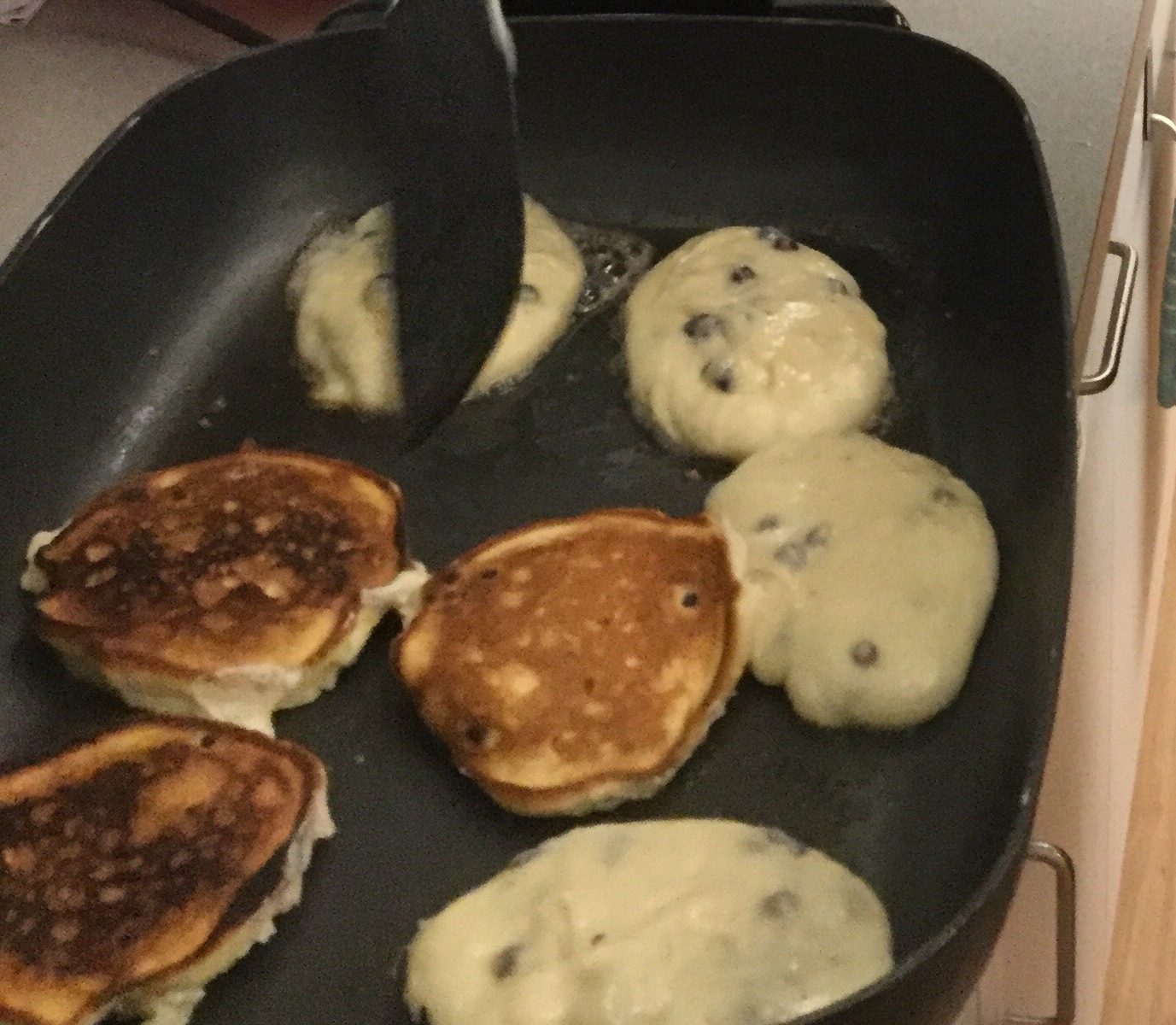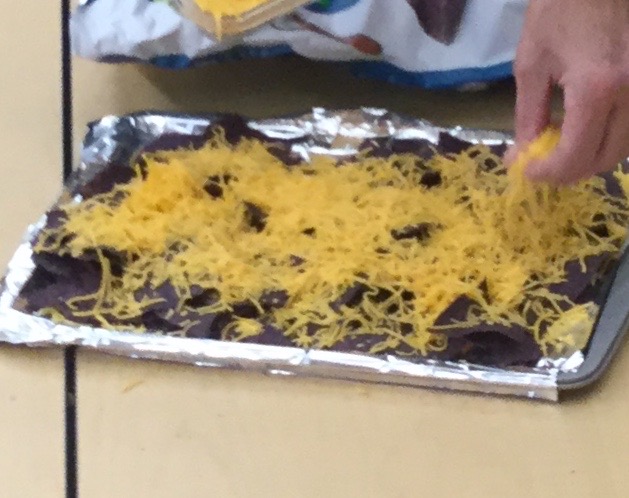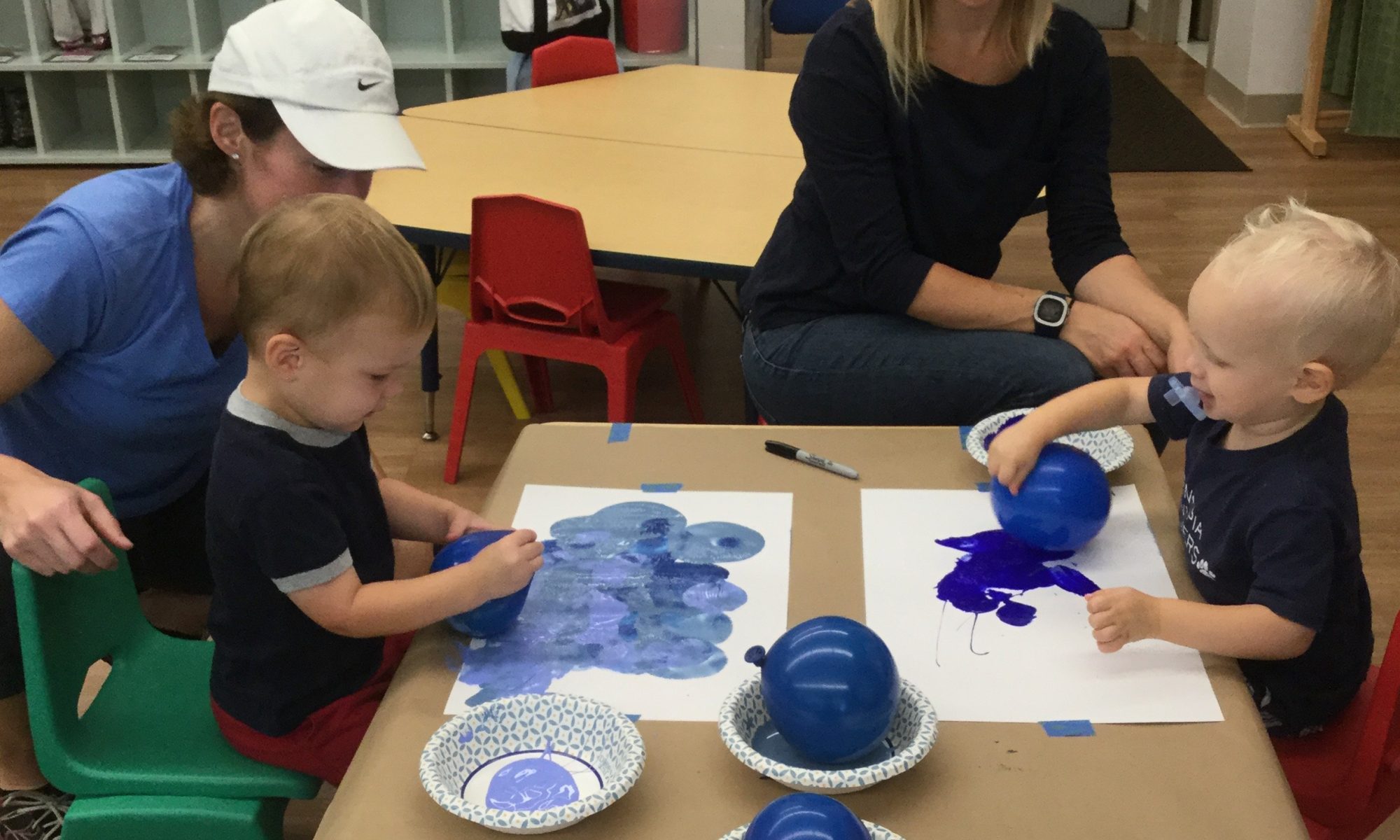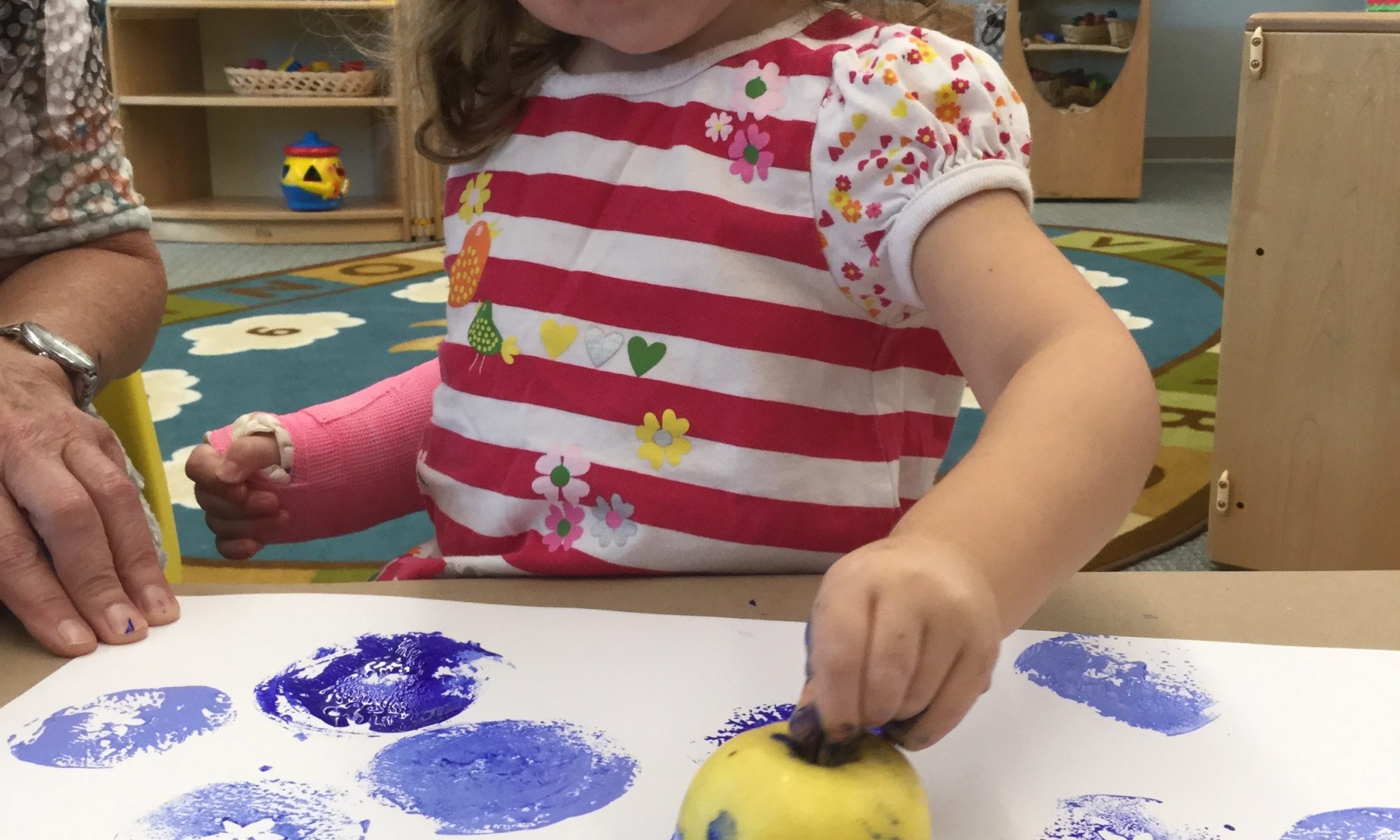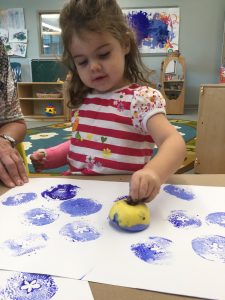See recipe for homemade playdough.
- Roll the playdough into balls, snakes, and snails
- Poke and press things into playdough (uncooked spaghetti, feathers, straws, toothpicks, buttons, beads, googly eyes, pipe cleaners)
- Make prints in playdough using leaves, shells, lace, and textured rolling pins
- Practice cutting skills by using scissors to cut playdough
- Make playdough monsters
- Practice making letters, numbers, and shapes by rolling the playdough into snakes and then laying the snakes on top of letters, numbers, or shapes drawn on paper
Here’s a wonderful article explaining why playing with playdough is so important for developing skills in young children.

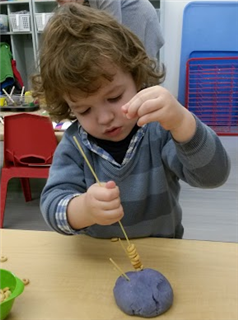

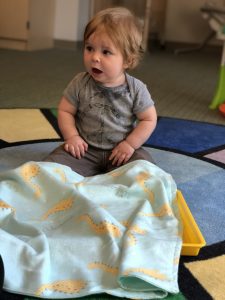
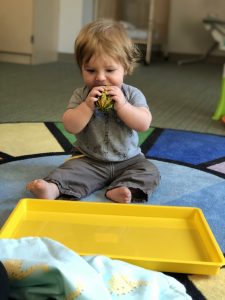 this stage of development learn through exploring the environment that objects still exist even when covered up or hidden. Try it again with another object. It’s a fun game to play again after a few weeks. Playing peek-a-boo is another way to illustrate this concept with younger babies.
this stage of development learn through exploring the environment that objects still exist even when covered up or hidden. Try it again with another object. It’s a fun game to play again after a few weeks. Playing peek-a-boo is another way to illustrate this concept with younger babies.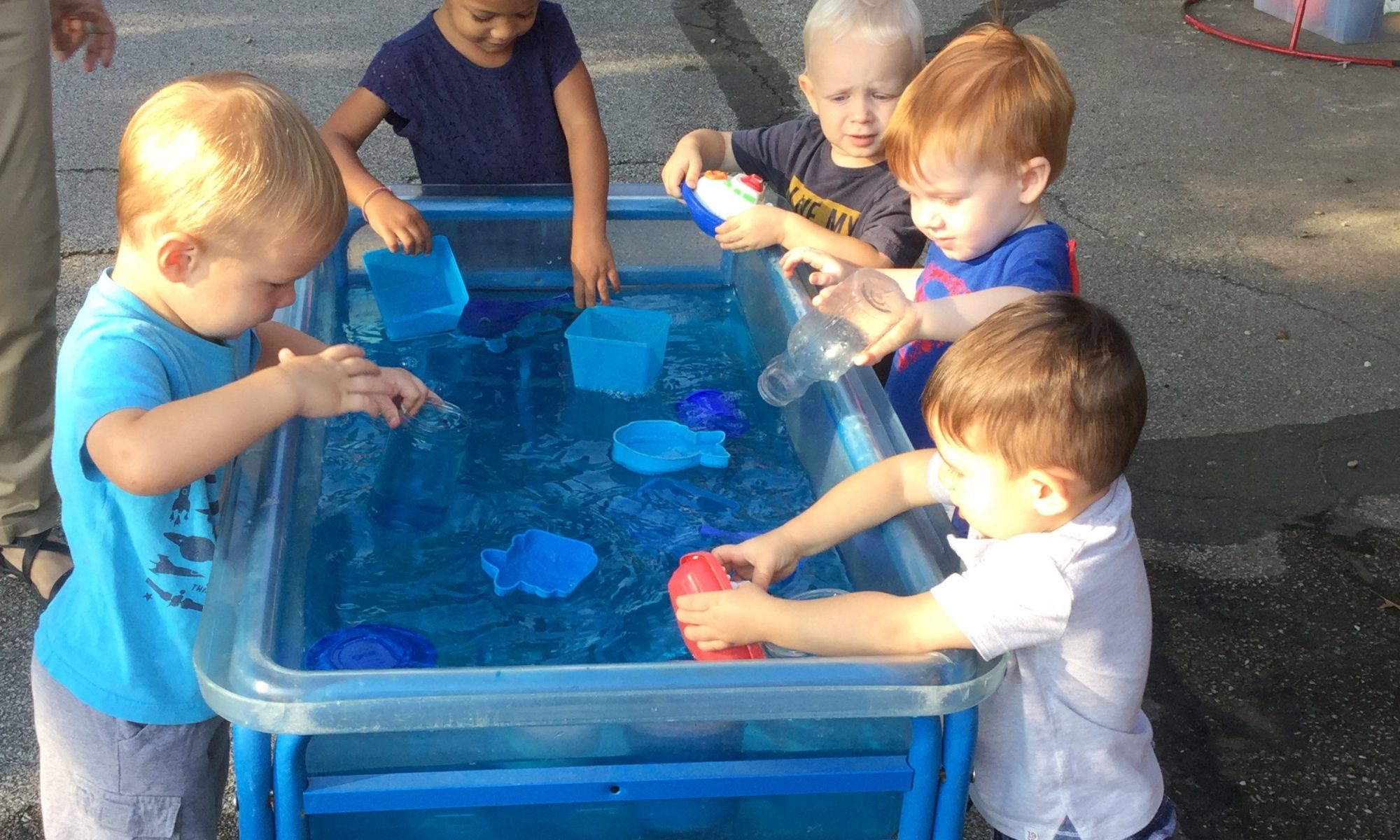
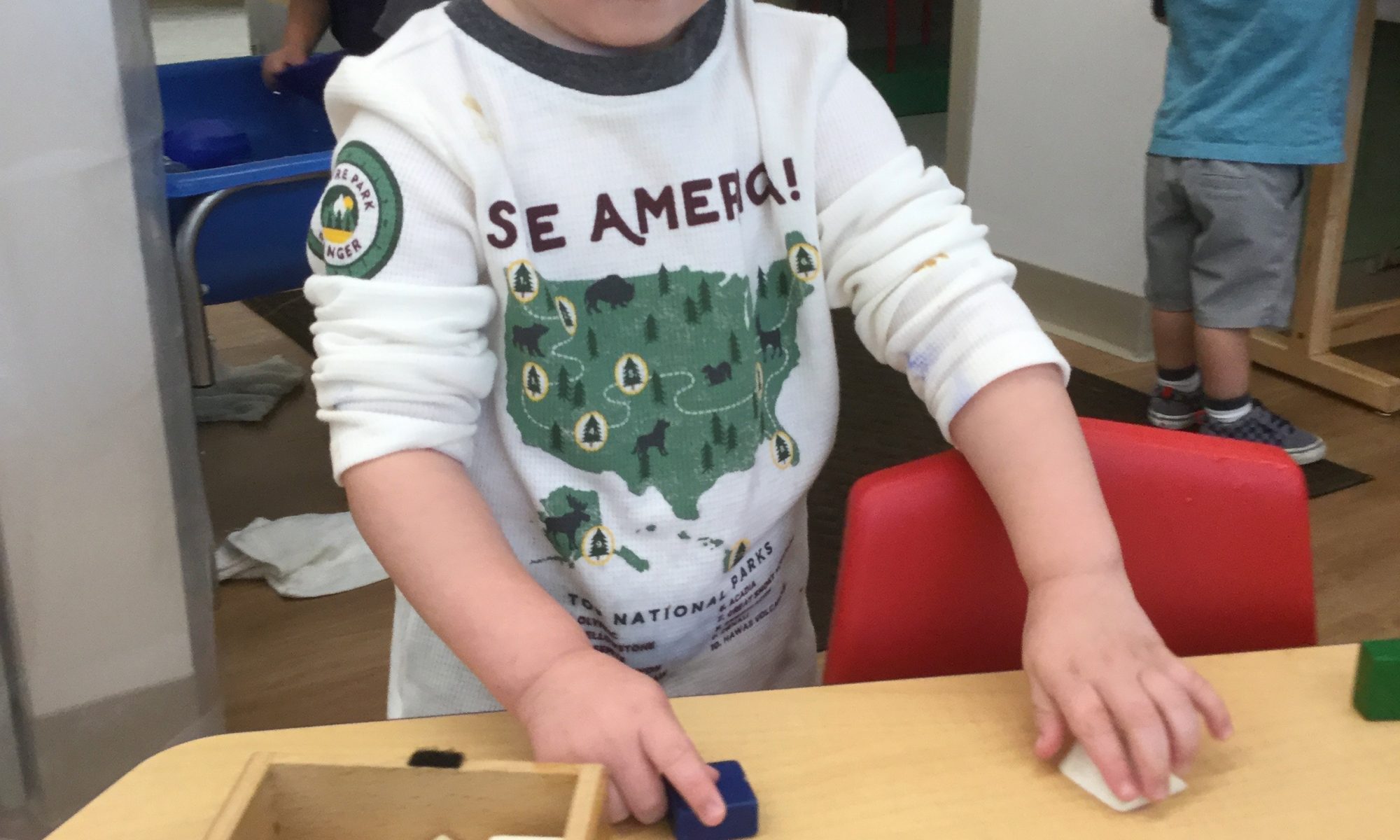
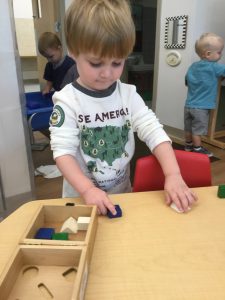 promoting basic math skills, vocabulary, awareness of same/different, and fine motor skills. Set a shape sorter in front of your child with all the shapes beside it. Explain to your preschooler that each shape has its own special “door” into the sorter, and his job is to find the right door for each shape. Pick up a shape and identify it to your child (a circle, triangle, star, – whatever the shape may be.) Give the shape to your child to examine, talking about what makes it different from the others. Then, let your child examine the sorter itself. Typically, there are cutouts for the shapes on all sides of the sorter, so you can examine the sides of the sorter, one at a time, comparing the cutouts to the shape. Let him try the shape in some of the cutouts, gently encouraging him to perhaps turn the shape a little to fit it into the sorter. Congratulate him when he finds the correct “door”. Then choose another shape and proceed in the same manner.
promoting basic math skills, vocabulary, awareness of same/different, and fine motor skills. Set a shape sorter in front of your child with all the shapes beside it. Explain to your preschooler that each shape has its own special “door” into the sorter, and his job is to find the right door for each shape. Pick up a shape and identify it to your child (a circle, triangle, star, – whatever the shape may be.) Give the shape to your child to examine, talking about what makes it different from the others. Then, let your child examine the sorter itself. Typically, there are cutouts for the shapes on all sides of the sorter, so you can examine the sides of the sorter, one at a time, comparing the cutouts to the shape. Let him try the shape in some of the cutouts, gently encouraging him to perhaps turn the shape a little to fit it into the sorter. Congratulate him when he finds the correct “door”. Then choose another shape and proceed in the same manner.